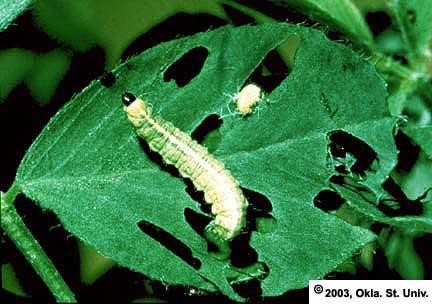Alfalfa Weevil Egg Populations January 2022
Throughout the period of January 20-27, 2022, alfalfa crown samples were taken at 7 sites across the state to ascertain egg populations of alfalfa weevils (Figure 1). Considering the type of winter we have experienced thus far, we may continue to see egg numbers remain low for the next few weeks. Numbers presented in the attached table reflect weevil eggs/ft2. While current egg numbers appear to be low (1.77 average), these numbers may not indicate the severity of the upcoming alfalfa weevil larval infestation, since most of the egg-laying by adult weevils typically occurs during the warm periods of January and February. Subsequent larval numbers usually reach their peak mid-March to mid-April. Egg numbers obtained during this sampling indicate the amount of oviposition that has taken place so far, including that from October and November of last year. Conditions during October were wet throughout most of the state. These conditions are not conducive to mating and oviposition by adult alfalfa weevils.
| Images | Caption | |
|---|---|---|
 |
Figure 1. Alfalfa Weevil Eggs | |
 |
Figure 2.Alfalfa Weevil Larva |
So far, with seasonal conditions throughout January, we are seeing minimal activity. Presently, all locations in the attached table (Table 1) have an average degree day total of 74.4 (thru 01-30-2022).
Remember the magic number for egg hatch is 150-degree days. This is the indicator we look for when beginning to scout for increased activity by larvae. In some years this can come as early as late February or be pushed back well into March, depending on weather. We are in store for some extreme winter weather in the coming days which will keep degree days at current levels and egg populations low for the time being. Alfalfa weevil egg collections have been trending lower during our January or early February sampling periods over the past several years. In previous collection years (2004), numbers approaching 500 eggs/ft2 were observed. This could have indicated a potential for early development in larval populations.
Changes in weather patterns during the fall oviposition timeframe and winter weather events like extreme freezing temperatures, into the teens and single digits, and moisture can have a great impact on eggs and early larval development. If cold weather conditions persist, we could experience a similar pattern with egg deposition and hatch being delayed. However, if a more seasonable weather pattern develops and degree day numbers begin to increase, larval populations could appear sooner (Figure 2).
Table 1. Alfalfa Weevil Egg populations for January 2022. Degree Days through January 30, 2022 are presented in the last column.
| County | February 2021 | January 2022 | Degree Days through 1-30-2022 |
|---|---|---|---|
| Alfalfa | 3.6 | 2.4 | 65 |
| Blaine | 4.8 | 0.8 | 73 |
| Payne | 3.6 | 0.4 | 60 |
| Kiowa | 2.0 | 4.0 | 79 |
| Grady | 4.8 | 0.8 | 74 |
| Garvin | 0.8 | 0.0 | 78 |
| Tillman | 4.0 | 92 | |
| *Means | 3.2 | 1.77 | 74.4 |
With extremely low numbers observed, no viabilities were taken.
I saw a few aphids during sampling for weevil eggs, but nothing alarming. They typically become more common in late February and early March as temperatures start to moderate. We’ll keep you posted on what we’re finding around the state as more information becomes available.
